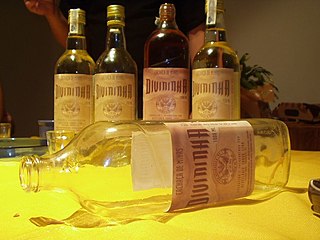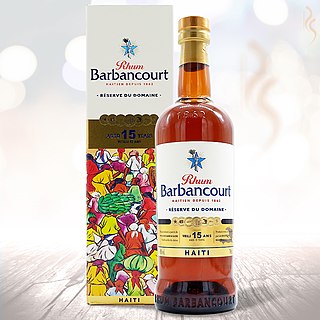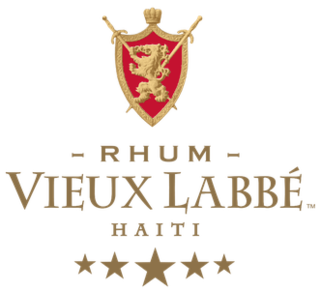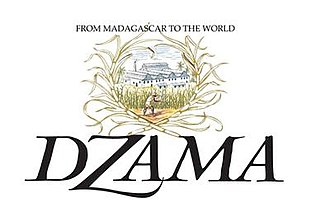
Cachaça is a distilled spirit made from fermented sugarcane juice. Also known as pinga, caninha, and other names, it is the most popular spirit among distilled alcoholic beverages in Brazil. Outside Brazil, cachaça is used almost exclusively as an ingredient in tropical drinks, with the caipirinha being the most famous cocktail. In Brazil, caipirinha is often paired with the dish feijoada.

Arrack is a distilled alcoholic drink typically produced in Sri Lanka and Southeast Asia, made from the fermented sap of coconut flowers or sugarcane, and also with grain or fruit depending upon the country of origin. It is sometimes spelled arak, or simply referred to as 'rack or 'rak. It is not to be confused with the anise-flavored distilled spirit called arak or araq. In many parts of India arrack is colloquially known as "desi daru".

Rhum Barbancourt is rum produced from pure sugar cane juice and bottled in Haiti by Société du Rhum Barbancourt. The distillery is one of Haiti's oldest institutions, and its rum is the country's most famous export, widely regarded as among the finest rums in the world for over 150 years.
The Edrington Group Limited, trading as Edrington, is a privately owned international spirits company based in Glasgow, Scotland. It produces single malts such as The Macallan, Highland Park, The Glenrothes, Naked Malt, and The Famous Grouse blended Scotch whisky. The spirits portfolio also includes Noble Oak Bourbon of Independence, Kentucky, and Brugal, the leading golden rum in the Caribbean. It also owns shares in Wyoming Whiskey, an American whiskey made in Kirby, Wyoming, and No. 3 London Dry Gin.

Haitian cuisine is a Creole cuisine that originates from a blend of several culinary styles that populated the western portion of the island of Hispaniola, namely African, French, indigenous Taíno, Spanish, and Arab influences. Haitian cuisine has some similarities with "criollo" cooking and similar to the rest of the Caribbean, but differs in several ways from its regional counterparts. Flavors are bold and spicy demonstrating African and French influences, with notable derivatives coming from native Taíno and Spanish techniques.

Glen Moray distillery is a Speyside distillery producing single malt scotch whisky. Situated on the banks of the River Lossie in Elgin, Moray the distillery started production in September 1897. It was sold in 2008 by the Glenmorangie Company Ltd. to La Martiniquaise.

Rum is a liquor made by fermenting and then distilling sugarcane molasses or sugarcane juice. The distillate, a clear liquid, is often aged in barrels of oak. Rum originated in the Caribbean in the 17th century, but today it is produced in nearly every major sugar-producing region of the world, such as the Philippines, where Tanduay Distillers, the largest producer of rum worldwide, has its headquarters.
Clairin is a distilled alcoholic spirit made from sugarcane produced in Haiti, that undergoes the same distillation process as rhum, although not as refined.

10 Cane was a premium Trinidadian light rum brand owned by LVMH. Moët Hennessy introduced 10 Cane in 2005. The product was discontinued in 2015. 10 Cane rum was named after the tradition of hand-harvesting and bundling sugarcane stalks in groups of ten.

Rhum agricole is the French term for sugarcane juice rum, a style of rum originally distilled in the French Caribbean islands from freshly squeezed sugarcane juice rather than molasses. Rhum is the term that typically distinguishes it in French-speaking locales from the rum made with molasses in other parts of the West Indies.

Sazerac Company, Inc. is a privately held American alcoholic beverage company headquartered in Metairie in the metropolitan area of New Orleans, Louisiana, but with its principal office in Louisville, Kentucky. The company is owned by billionaire William Goldring and his family. As of 2017, it operated nine distilleries, had 2,000 employees, and operated in 112 countries. It is one of the two largest spirits companies in the United States, with annual revenue of about $1 billion made from selling about 300 beverage brands.

A rum baba or baba au rhum is a small yeast cake saturated in syrup made with hard liquor, usually rum, and sometimes filled with whipped cream or pastry cream. It is most typically made in individual servings but sometimes can be made in larger forms similar to those used for Bundt cakes. The batter for baba includes eggs, milk and butter.

La Martiniquaise is France's second-largest spirits group.

Vieux Labbé is a rum produced and bottled in Haiti by Berling S.A. in Port-au-Prince.

Dzama (/ˈzɑːmə/) "Rhum" is the brand name for rums produced by Groupe Vidzar in Madagascar.

Starlaw distillery is a grain whisky distillery located at Bathgate in West Lothian, Scotland.
Maison Ferrand is an independent French company specialized in the production and distribution of spirits worldwide. The company's products include cognac, rum (Planteray) and gin (Citadelle). The company's foundation is rooted in the history of the centuries-old Ferrand family from the Cognac region.

La Plaine St. André is a colonial-era sugarcane plantation located in the southeast of Mahé, Seychelles.
















